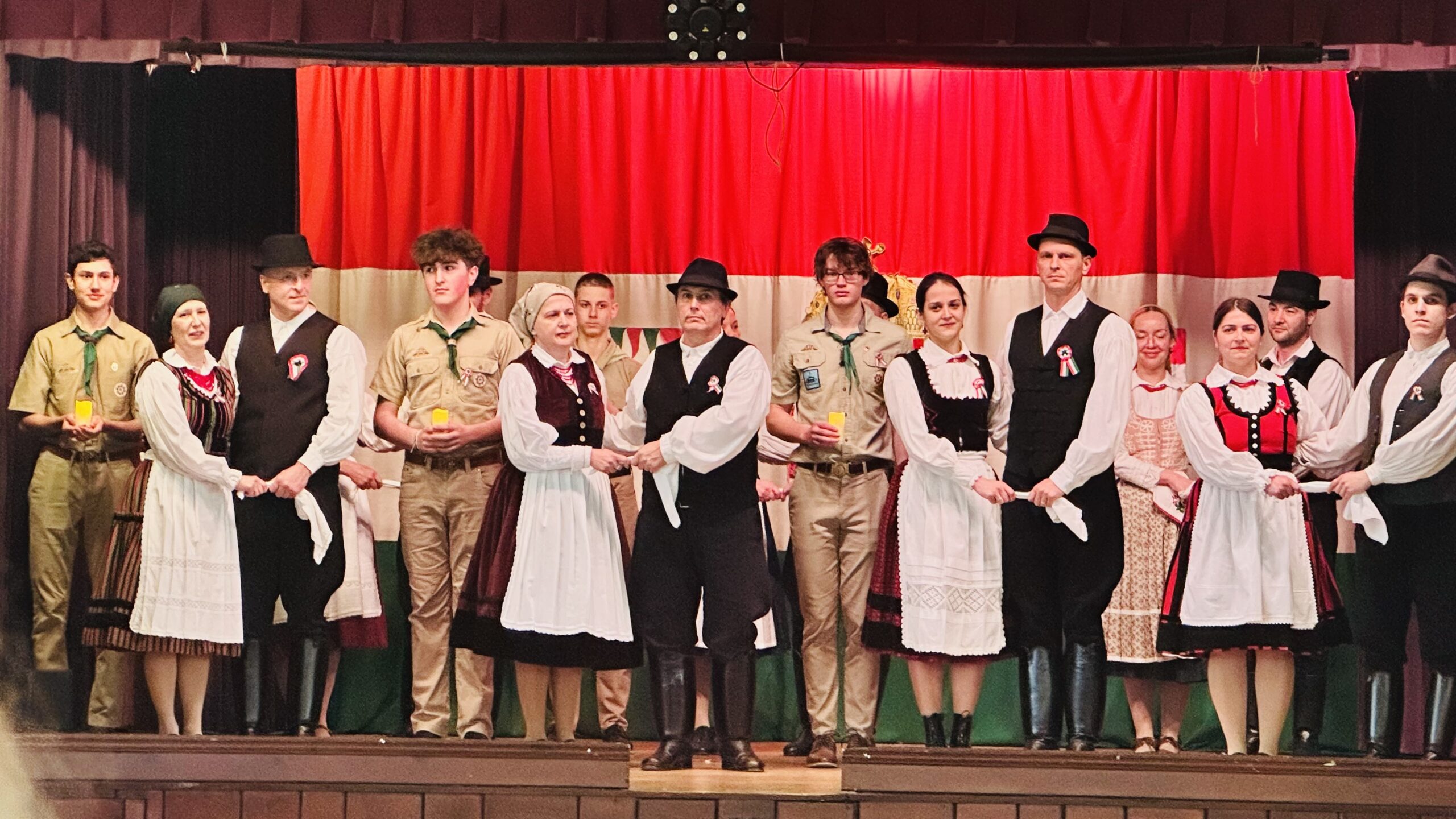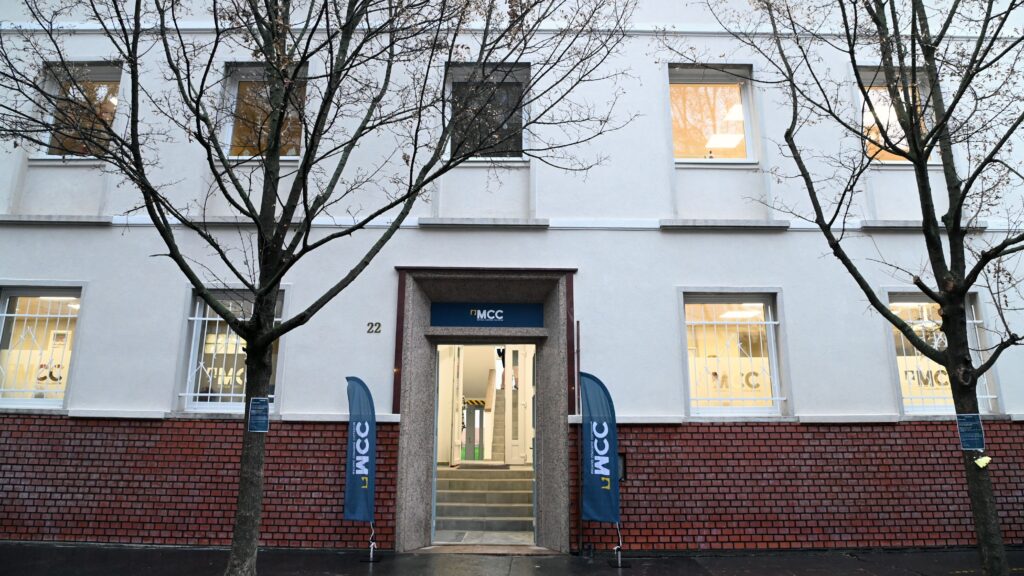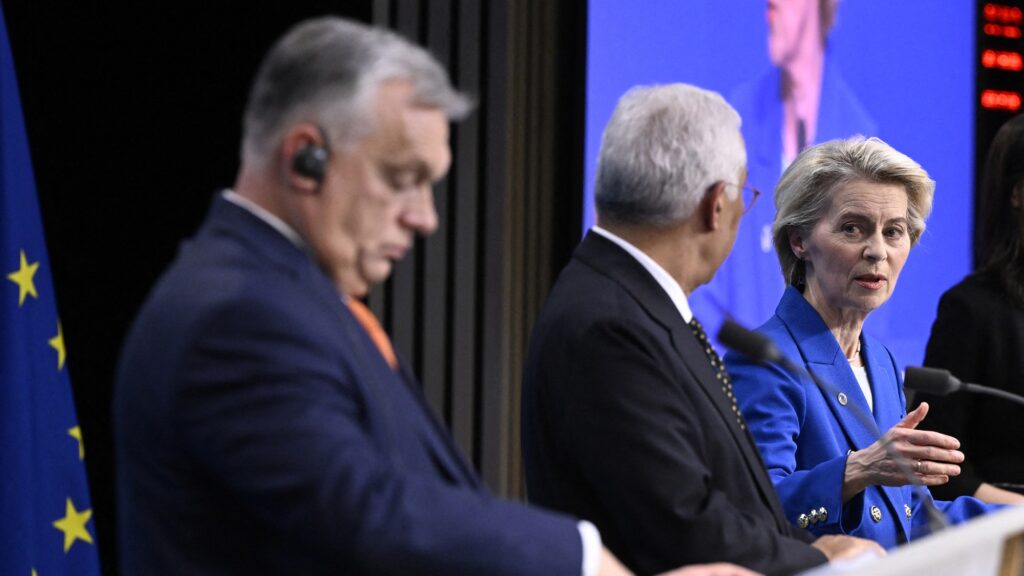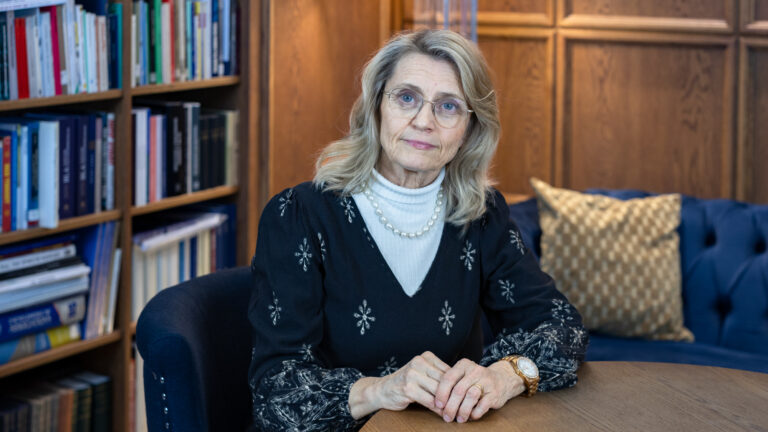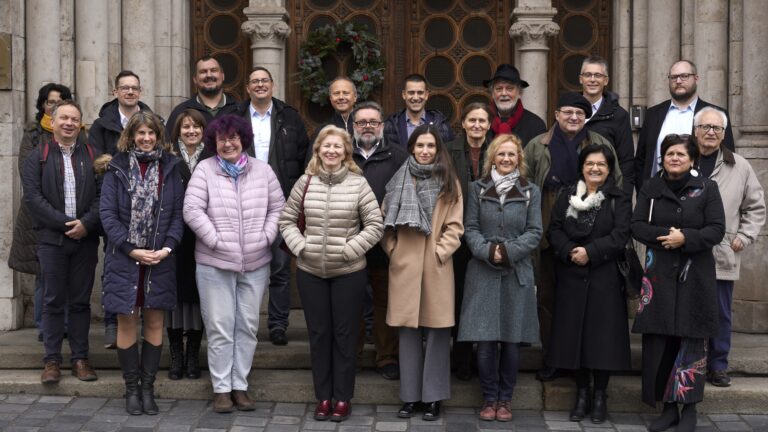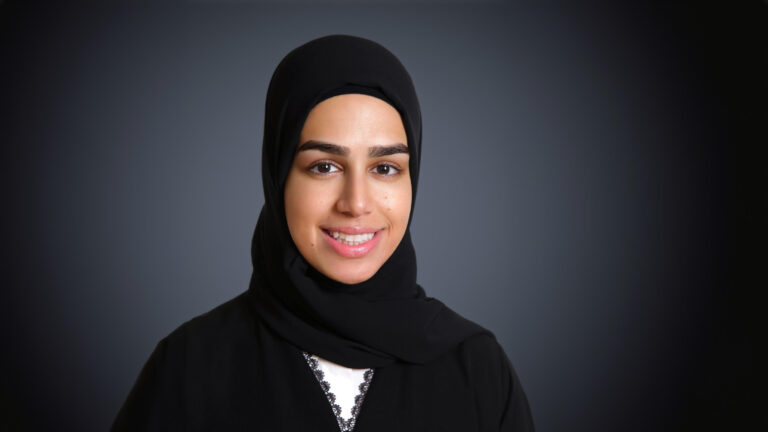I first met Szeklers from Wisconsin at the 2023 Csipke Folk Dance Camp in Michigan, when I noticed a few people speaking in a very strong Szekler dialect, and I learned that they were from Transylvania and lived in the neighboring state of Wisconsin. We didn’t have the chance to speak then, nor at this year’s Chicago Gala Ball, where they had a table of their own and clearly had a great time. When I recently ran into them for the third time at the Gulyás Festival in Chicago, I didn’t let the opportunity pass. I sought out the young lady who seemed to be the most active among them: she volunteered, performed on stage several times, and led the children’s activities.
***
How did you—and all of you—come from Transylvania to the U.S.?
The story of our small community began about 22–23 years ago, when my brother-in-law, Imre Gyergyai—Öcsi—came to Wisconsin from Kézdivásárhely (Târgu Secuiesc, Romania) to try his luck. He was followed by his close circle of friends. Some went back, then returned to the U.S., and most of them eventually settled here. Over time, they met other Hungarians from Transylvania, e.g., from Kolozsvár (Cluj-Napoca, Romania) and Bács (Baciu, Romania). They got to know them, found partners, and now the community numbers 45 people, including children. There are some mixed marriages, but these are mostly Hungarian couples. At the time, some of them came from the same block of flats, and now, six families live very close to one another, too. My partner, Zsolt, followed his brother ten years later, and I joined them nine years ago.
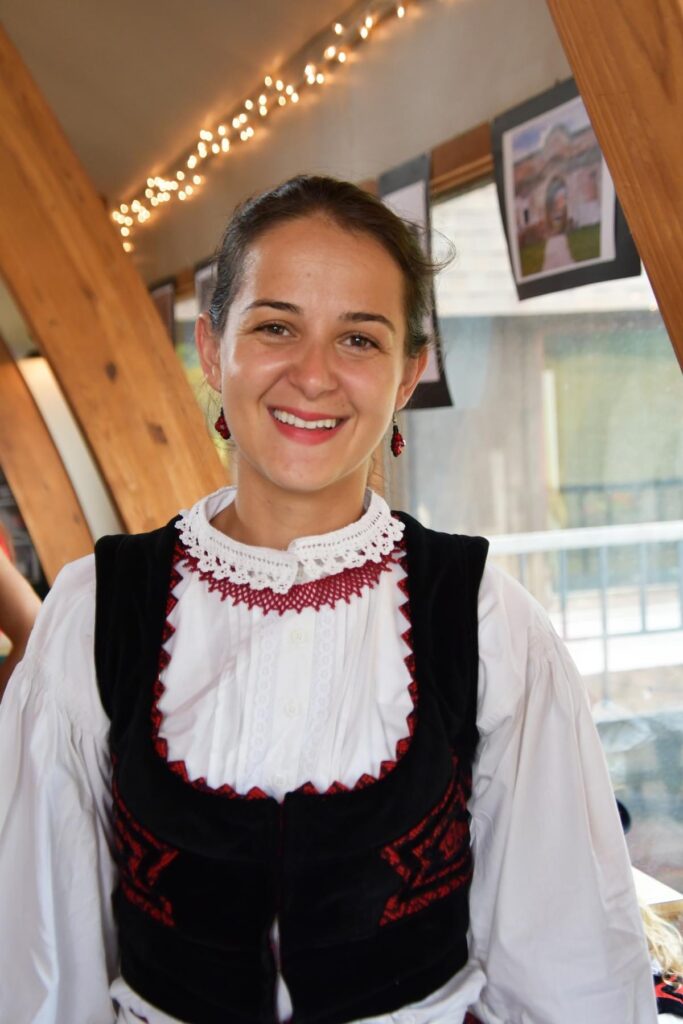
I’m from Székelyszenterzsébet (Eliseni, Romania). Since 3rd grade, I attended school in Segesvár (Sighișoara). Initially, I commuted by bus, then I lived in a dormitory, and later in a rented flat. Finally, I went to university in Kolozsvár, where I studied banking and finance. I first came to the U.S. in 2015, as a university student, just as many others did at the time: we worked all summer, then traveled. I first found myself among a Romanian community, and I was quite surprised to find that Hungarians lived here too, at the end of the world…That’s when I met this group of friends, including Zsolt. I went back, finished university, then a year later I returned—and I’ve lived here ever since. Zsolt is eight years older than me; I’m the youngest in our group, and they were very happy that I lowered the average age a bit…One and a half years later, our son Zalán was born—he’s now seven and a half—and then our daughter Bejke arrived; she turned five in May.
Where do you live, what kind of area is it, and what is your occupation?
Zsolt is a car mechanic, and I started as a waitress, but over the years, my work changed continuously. Wisconsin Dells is a small resort town, packed in the summer, a bit of a ghost town in the winter, but working as a waitress paid very well—it was a good starting point. After that, I became a manager in a clothing store, and now I’m working in pre-accounting, slowly moving towards my learned profession…Wisconsin Dells tends to have harsh winters, but in recent years, they’ve become milder, spring and autumn have grown longer, although we still only get about two to two and a half months of real summer. However, the area we live in is designed to be enjoyed even in summer: it’s full of pools and waterparks, we’ve got a wonderful river and lakes—the nature is really beautiful. There’s a lake not far away, Devils Lake, where you can also go hiking. There are smaller hills where you can ski and snowboard in winter—a lot of activities are possible here; the region was developed so that all four seasons can be enjoyed. We love Wisconsin Dells also because it’s small and everything is very close.
Every time we met, you performed as a folk dancer. When did you start dancing?
I remember as a child, when Pastor Kálmán Kincses and his wife, Olga, came to Székelyszenterzsébet, I was amazed by how they rebuilt and brought the community together, with a strong emphasis on nurturing Hungarian folk traditions. I’ve always tried to carry forward that wherever I lived. My dancing ‘career’ started in Segesvár with the Kikerics group; since at that time, there was no dance group in Erzsébet, the Cickom Ensemble was formed a few years later. I continued dancing in Kolozsvár as well, in the Ördögtérgye group.
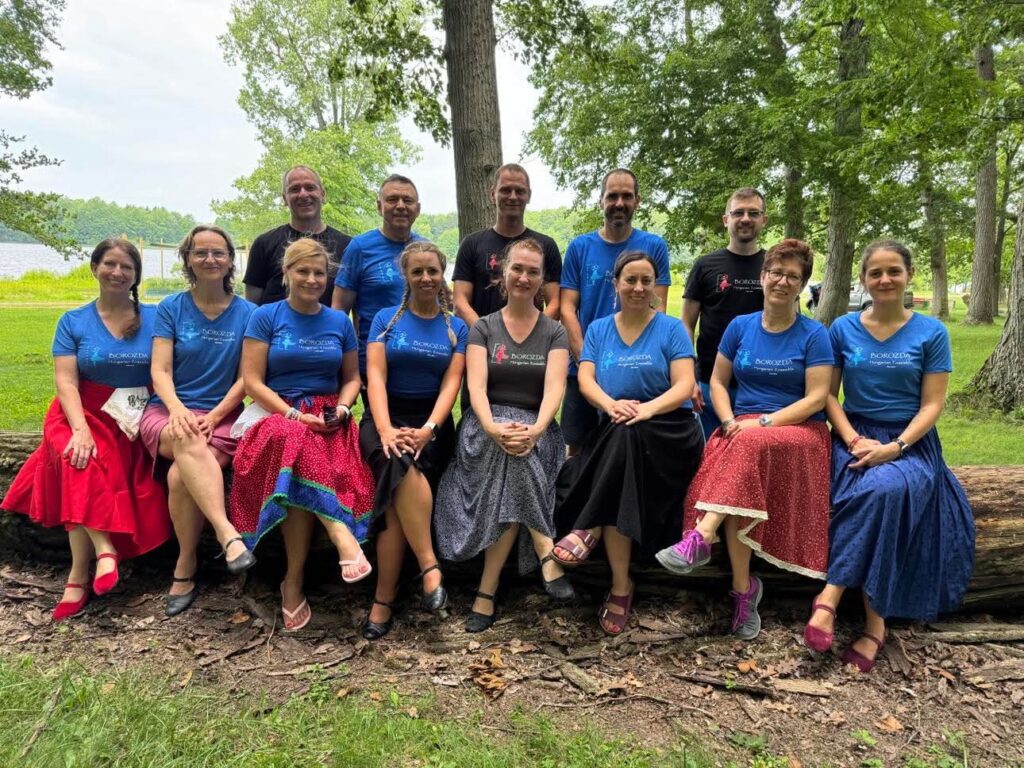
After that, several years passed without folk dancing, as there were no such opportunities in Wisconsin. There’s no official Hungarian organization here—just our group of friends. We celebrate every holiday—Christmas, New Year’s, Easter, Thanksgiving, etc.—and every child’s birthday together. Four years ago, when I was searching online for some kind of folk dance opportunity that I could bring my children to, I found the Csipke Camp in Michigan. Bejke was only two then, so Zsolt spent the whole week taking care of both children, while I danced and partied every day until dawn—all my previous knowledge came back; I felt as if I hadn’t missed a single moment. Ever since, I’ve tried to get the most out of every Csipke Camp or other dancing opportunity. A year later, we invited two more families, and after that, even more people from Wisconsin joined us. Since then, Hungarian folk music has become part of our group’s life, because before, it was only I who was involved in it. Now we go every year—that’s almost a given—and afterwards we go straight to the Gulyás Festival in Chicago.
At this year’s Gulyás Festival, I saw you performing with young children. Did you prepare them?
I started teaching the children ever since more of us from Wisconsin started attending the Csipke Camps, as there was an interest in it. Around 14–15 children come to the rehearsals, including a one-and-a-half-year-old girl, but those who actually dance are between five and 12. I try to put together a small performance for every major holiday, and in doing so, I help them learn more about Hungarian traditions. We meet weekly, primarily for the children, but we gather beyond the rehearsals, to spend time together—we sing too, and try to preserve our Hungarian identity also in this way. At least, that’s my goal. All of these children were born here, and some don’t speak Hungarian at all. Mine do, as we speak only Hungarian at home. Nevertheless, I teach dance rehearsals exclusively in Hungarian; at first, those kids just stared with big eyes, but by now they understand what ‘two steps to the right, two to the left’ means.
You also performed with the Borozda Folk Dance Group, which you are a member of. How do you manage this, considering you live in another state?
Since we don’t have any weekend Hungarian school in Wisconsin, we’ve started taking our children to the Csík Hágó Hungarian School and Nursery in Chicago every other weekend since last autumn, that is, 2024, which means two and a half hours of driving one way. Our children finish school on Fridays at half past three, have a quick lunch, and by four o’clock we’re already on the road, because the Borozda dance rehearsal—which I’ve been attending ever since we started going there with the children—starts at seven. On Saturday mornings, the children have school, followed by scout programs—which Bejke will also start this autumn. Meanwhile, Zsolt goes to play football—both Friday night and Saturday morning—so it’s a good routine for all of us. Usually, we head home on Saturday afternoons, unless there’s an invitation for a gathering or community event. Borozda performances are usually part of some celebration we’d go to anyway. For example, at last year’s 1956 commemoration and this year’s 15th of March celebration, Zalán had to be present as a scout, and Borozda also performed. Because of this, I can now hold dance practices less frequently for the children in Wisconsin, as we spend every other weekend—or sometimes every weekend—in Chicago, depending on what is happening there. But during school holidays, I sometimes hold three rehearsals a week to make up for the missed sessions caused by my absence.
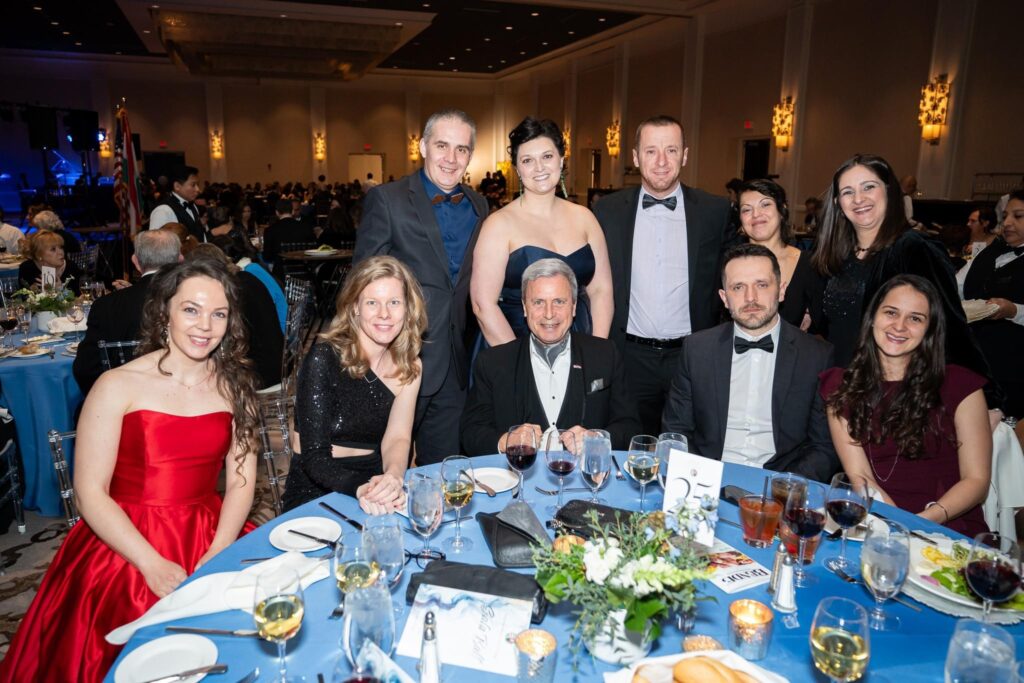
Are you the only family traveling this much, or do others also come?
Not yet. There’s one mixed family whose children take online Hungarian classes. The father is a Hungarian from Kolozsvár, the mother is from Zambia, and she looked into ways to give the children more exposure to the Hungarian language. Unfortunately, they wouldn’t be able to manage the weekly drive to Chicago. And there’s another family who seriously considered it, but their time is so consumed by sports and other activities that they couldn’t fit it in either.
One definitely has to prioritize. I saw you performing at the Chicago Gala Ball this year, too. Children couldn’t attend that event, but your Wisconsin group was there. How do you manage childcare during adult-only events?
We’re in quite a lucky situation, because two years ago, Zsolt’s other brother also moved here. Because of that, their mother keeps traveling back and forth between the two continents, so we often have a grandmother here who helps us whenever we are in need. My parents also visit regularly—in the winter, they stay for two, three, or even four months, and during that time, they try to help with everything, especially spending time with the children, which I think is the most important. My father took early retirement, and together with my mother, who used to be deputy mayor, work in agriculture, in the orchard, and manage rental houses—they’re doing well, and can afford to visit us regularly.
Back to the Gulyás Festival, where you came with your whole family and your friends from Wisconsin. To me, it seems like you’ve been attending for longer than just last year—you seem so comfortable in the community led by Reverend Áron Trufán…
We’ve been attending the Gulyás Festival for quite a few years now—even when I was pregnant with Zalán—so we already blended into the Chicago Hungarian community to some extent. There’s also a couple here—Zsolt and Ildi Veres—who are Áron’s and his wife, Kata’s, relatives, so Áron and his family visit us in Wisconsin regularly, even for our Thanksgiving or Christmas celebrations. As far as the others are concerned, if I remember correctly, we first got to know Péter Bartha and his wife, Szende, at the Csipke Camp four years ago. When we started talking, we were surprised that we lived so ‘close’ to each other and didn’t know one another. They invited us over, and when we went to the Gulyás Festival the next year, they welcomed us like family members—with incredible warmth. Since then, especially now that we’re there every week or every other week with the children, the entire local community treats us the same way: when we go there, it really feels like going home. At the beginning, we always stayed at the Trufáns’, they insisted on this, and their door was always open for us. Now that we know others, too, it’s almost a competition over who gets to host us when we’re in town.
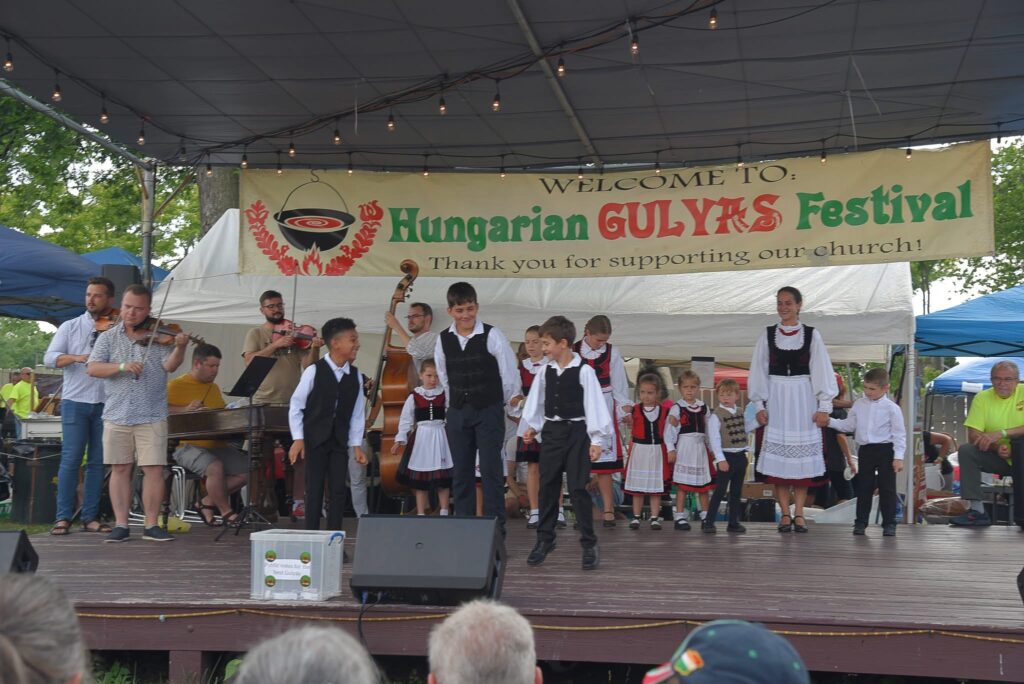
Am I right in thinking that if you want to attend Hungarian church services, you also have to go all the way to Chicago?
Yes, since there is no Hungarian church in Wisconsin. I believe we first met Áron when he was invited here to baptize someone about eight years ago. When we heard that there was a Hungarian priest in Chicago who was so flexible, we decided we’d also invite him to baptize Zalán—and so we did. Bejke’s baptism was in January last year, and Áron came again. So occasionally he comes to baptize, even bringing his friend Laci Kovács with him to play music, but for every one of us to visit his church there would be too much of a stretch. Besides, most of the Transylvanians here are Catholic, not Protestant. We do sometimes stay for Sunday service, but not every week. So those who want to practice their religion here need to go to American churches. Áron comes here nearly every month, but usually not as a priest, but as a friend, to have fun. I must admit, we’ve never thought to invite him regularly to preach…We should consider it.
Part of the leadership of the Hungarian Communion of Friends (MBK) also lives in Chicago. Have you been to the ITT-OTT Conferences at Lake Hope, Ohio, which they’ve been organizing for over 50 years?
We’ve had lots of invitations to attend that gathering, and we are thinking more and more about it. So we haven’t attended that camp yet, but we did attend the family camping event organized by the president of the Foundation for Hungarians in Cleveland, Lóránt Csibi, two years ago and also last year again. We got to know him and his wife, Zsuzsanna, also at the Csipke Camp four years ago; we talked a lot and immediately hit it off. They mentioned the family camping, which didn’t interest us much then, because Bejke was still very young; when we finally joined that family camp, we had a great time.
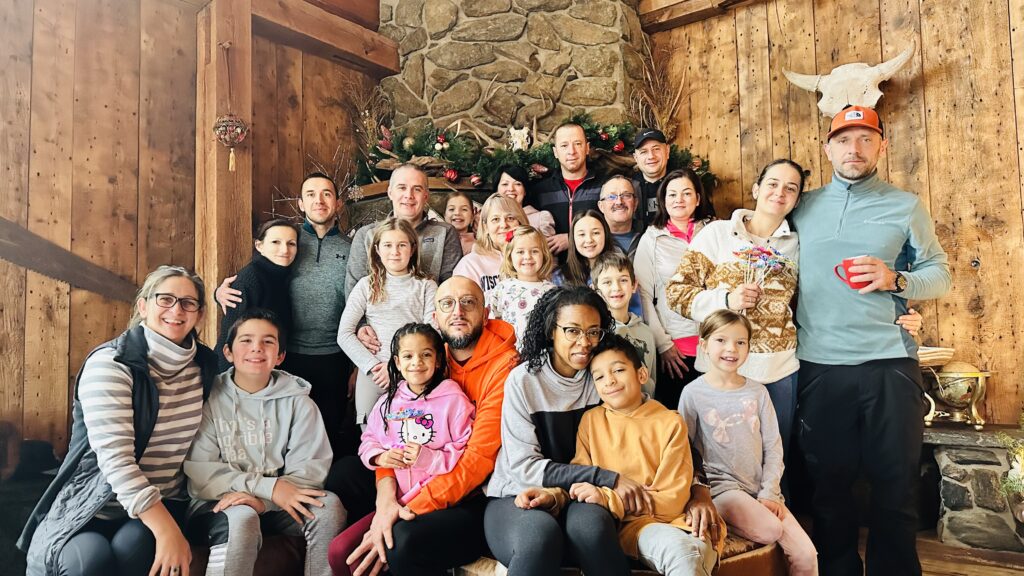
Back to Wisconsin—are there other Hungarians around, besides your group?
Certainly, but we don’t know how many or who they are. I know of a Hungarian living in Baraboo, just ten miles from us, but she’s never joined us—even though we gladly welcome others, not only people from Transylvania. Since we started commuting to Chicago regularly, we’ve met many Hungarians originally from Hungary, too. We invite them over, and they come—so connections are formed based on shared interests, not just on the basis of where they are from the Carpathian Basin. Once, I met a young woman by chance in a club—she was with Romanian girls I knew, and they told me about her. I tried several times to invite her, but she never came—for some reason, to her, the Hungarian community hasn’t been important yet. Maybe later, if she starts a family and has children…I also don’t know of many others who came here, like Zsolt or me, and actually stayed permanently. When new university students arrive to work in the summers, we quickly get to know them, and if we see a Hungarian-sounding name, we reach out. But most of them go back home after the season. Today’s young generation typically returns home—they don’t stay in America for long or for life. Our group hasn’t grown for a long time either; I was the last to join almost a decade ago. As for the older generations of Hungarian immigrants in this state, I suppose they settled long ago and assimilated into the local American society; that’s why they don’t seek our company.
Read more Diaspora interviews:

